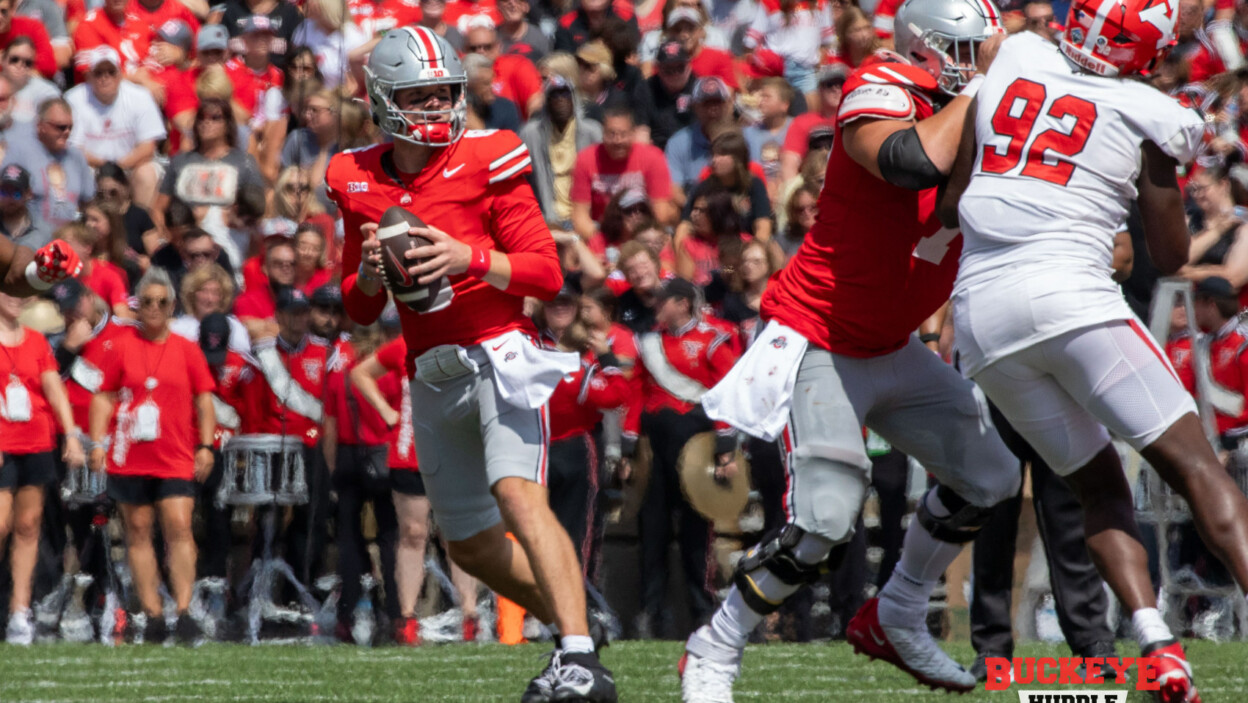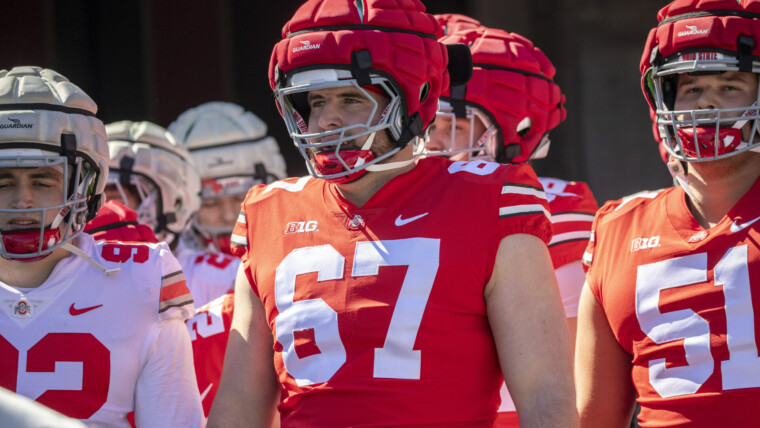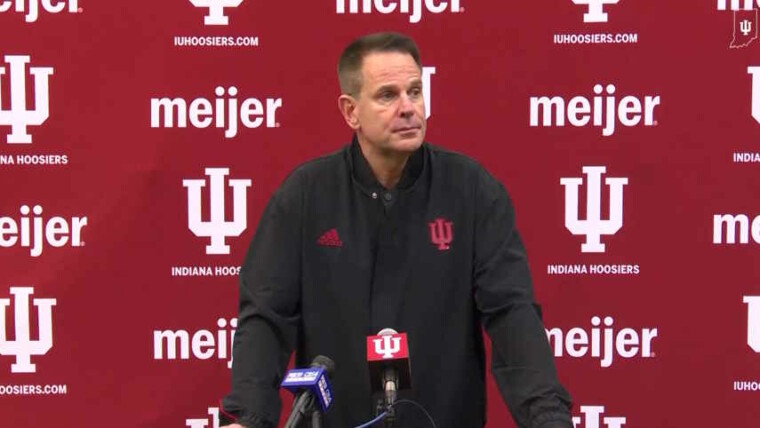Hi, come in, have a seat. There are some cookies and coffee on the table over there if you would like, so please help yourself. Afterward, all I ask is that you watch this 30-minute presentation about how now is the perfect time for the affordable wonders of a time-share condominium (and also how the NCAA’s new clock rule is destroying the game of college football).
Sorry for the click bait and switch, but I do want to talk about the new clock rule in college football that no longer pauses the clock after a first down outside of the final two minutes in each half.
But before we move on, I need you to please read and acknowledge that you have read this first part:
THE CLOCK RULE IS NOT THE REASON FOR OHIO STATE’S POOR SHOWING ON OFFENSE.
Thank you.
We will talk more about the Ohio State offense in the coming days, particularly the offensive line, the inability to run the ball consistently, the need to end the quarterback competition, the substitution pattern at running back, and more. But I did a bunch of box score research this week and I wanted to justify my time expense.
So, the clock. Head coaches around the country are already speaking out about how they don’t care for the rule, just as they did in 2006 when the NCAA implemented a rule that started the clock on the kickoff. That rule lasted one year. If the coaches have their say this year, so will this one.
But first, let’s set a baseline here that will definitely make you say, “So what’s the problem?”
Last year, the Buckeyes averaged 67.4 plays per game. In two games this year, they’ve had 67 and 60 plays on offense. So big whoop, right? (Especially when you consider the fact that OSU had 123 total snaps in their first two games last year, compared to 127 this year.)
Kind of, yeah. But they averaged 67.4 plays per game last year thanks in part to shutting the offense down through the third and fourth quarters in over half of their games.
Contrast that with the fact that they’re still trying to get as many snaps per game as possible this season and it’s not as easy as the Buckeyes would like.
And no, getting a first down on third down won’t actually give them more possessions. In fact, it could give them fewer. Also, a three-and-out takes the same amount of time as a three-play touchdown drive, so offensive effectiveness isn’t necessarily a factor in fewer possessions either.
Basically, none of this has anything to do with the Ohio State offense and its 29 points per game this year. These are two different topics.
Buckeye head coach Ryan Day has said several times that the inefficiency of the offense right now is the issue, which then makes each possession more valuable because there are fewer of them.
And yes, there are fewer of them.
Here is some data.
Ohio State had 10 possessions on Saturday. They’ve now had 20 this season.
They hadn’t had a 10-possession game since 2021, but have now had two in two games this season.
The 10 possessions on Saturday included the final possession with just 25 seconds on the clock. OSU kneeled down. It was essentially a 9-possession game. Do you know how many 9-possession games Ohio State has had over the last decade?
One.
It was against Army in 2017. An offense designed to milk the clock and stay on the field.
The last time they had just nine possessions against a non-option offense came in 2013, but it was against Iowa, so…I mean, COME ON. Both teams ran the ball and burned the clock like it was doused with gasoline. The last time before that was Tresselball — the 2010 loss at Wisconsin. And that game has been redacted, so I don’t even know if we can count it.
Army, Iowa, and Wisconsin.
This is how far back we have to go and the grind-it-out offenses the Buckeyes had to face in order to only have nine offensive possessions.
And now it might end up being the norm.

The Buckeyes are averaging 10 possessions per game (closer to 9.5, but whatever) right now. And they’ve been dangerously close to as few as eight possessions in both games.
I expect the average possessions per game to go up and for this topic to eventually go somewhat away as coaches accept it and adjust (or don’t), but here are the average possessions per game under Day’s offense previously: 2022 (12.7), 2021 (11.8), 2020 (13.3), 2019 (13.6), 2018 (14.4), 2017 (13.5).
That’s three possessions per game more in every year except for 2021, and in 2018 the Buckeyes averaged five more possessions per game (four-tenths of a possession is still a possession).
Seven times previously under Day’s offense, the Buckeyes have had 9 possessions in the first half. All seven of those times were under defenses led by coordinators Greg Schiano and Jeff Hafley, for what it’s worth.
So, yeah, the defense has to get off the field. Now more than ever.
Ohio State’s defense only gave up 12 first downs, however, and YSU was still able to hold the ball for 34:00.
The last eight times the Buckeyes have given up exactly 12 first downs, the opponent has averaged 25:57 of possession.
Rutgers in 2022 was the only time in those eight games where an opponent had the ball for over 30 minutes. They had it for 33:05, which isn’t out of sight of Youngstown State’s 34 minutes, but Rutgers milked the clock like they were rationing on a deserted island.
The Penguins were 5-of-12 on third down. Ohio State needs to do better. Yes. Nobody is arguing otherwise. But don’t ignore the impact of the clock rule.
Third downs are bigger than ever now because it can cost an offense an entire possession later in the game. That’s always been somewhat true, but the light on that has never been brighter than now.
Teams will continue to weaponize the clock. Others will want to trade blows. The Buckeyes will need to adapt, which they already started to do by winning the toss and taking the ball against Youngstown State.
The new clock rule has taken some football away from us, but that’s not why Ohio State is scoring 29 points per game.
In past games against teams like Indiana and Youngstown State, Ohio State would have had more possessions, but the final couple of possessions would have been spent running out the clock with backups and very likely punting.
And by that point, the Buckeyes would already have their 45 or 62 or 56 points. The last couple of possessions against teams like this are essentially meaningless.
Against teams where the Ohio State offense might need as many possessions as possible, however, they’re going to want to make hay while the sun is shining, because Daylight Savings Time is over.
So yes, the defense needs to get off the field. Yes, the offense needs to be better. But also yes, the clock rules are taking possessions away.
These three things can all be true. And they all are true.
Now it’s time to deal with it.








21 comments
Ohio State set to wrap up June recruiting frenzy with 17 official visitors
The Impact: Cincere Johnson can become next do-it-all Ohio State linebacker
Thoughts, news and notes from final Ohio State one-day recruiting camp
Jerquaden Guilford Talks Ohio State Camp and Upcoming Visit as Decision Nears
The Latest on Five-Star Offensive Tackle Felix Ojo
The Impact: Ohio State lands key commitment from cornerback Jordan Thomas
Do the Buckeyes Lead for the Nation’s Top Linebacker?
The Impact: Kayden Dixon-Wyatt is latest prototype receiver to commit to Ohio State